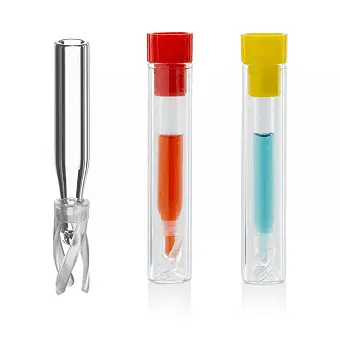Checkout using your account
Checkout as a new customer
Creating an account has many benefits:
- See order and shipping status
- Track order history
- Check out faster
Vial Inserts
Vial inserts are an optional add-on for vials that can be used to flexibly adapt shapes, materials and filling quantities to a specific application. They offer numerous advantages, especially when it comes to handling small sample volumes and avoiding sample loss.
Vial inserts are available in various shapes, sizes and materials to meet the different requirements in chromatography. The most common materials are glass and plastic.

